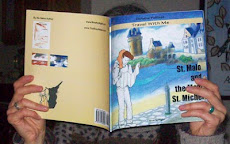To all our friends,
everywhere in this World, Merry Christmas and Happy New Year from Texas with
this great folk song "The Yellow Rose of Texas" which was, for some
time, as popular as an anthem, at least in Texas. The earliest known version is
found in Christy's Plantation Melodies. No. 2, a songbook published in
Philadelphia in 1853. The original lyrics have been written in a cross between
the dialect historically spoken by African-Americans and standard American English.
The song used the first person from the perspective of an African-American
singer who refers to himself as a "darkey" longing to return to
"a yellow girl," a term used to describe a bi-racial woman born part
black and part white.
The legend goes for a
beautiful "yellow girl" during the times of the war against Mexico in
1836 by the Texans to win their independence, nicknamed Rose. Her actual name
was Emily West (1815-1891), also known as Emily Morgan, who became a folk
heroine whose legendary activities during the Texas Revolution have come to be
identified with the song "The Yellow Rose of Texas."
Born in Connecticut,
Emily, a free woman of mixed race, was contracted in 1835 to James Morgan in
New York to work as an independent servant for one year in Morgan's Point,
Texas, at the New Washington Association's hotel as a housekeeper. On April 16,
1836, Emily West and other residents were kidnapped by the Mexican cavalry. She
was forced to travel with the forces of General Antonio Lopez de Santa Anna as
they prepared to face the Texan army led by Sam Houston, and was in the Mexican
camp on April 21 when Houston's forces attacked. The Texans won the Battle of
San Jacinto in 18 minutes, giving birth to the Republic of Texas.
According to the
legend, Emily acted as a spy for Sam Houston, getting information on Santa
Anna's military force and intentions, succeeding to seduce the Mexican General,
making him busy when the Texans attacked, making Emily a heroin, suggesting
that she fit the description of the girl in the popular folk song "The
Yellow Rose of Texas". The story continued to grow, with many references
to Emily West's beauty, the sweetest Rose of color as the legend took hold by
the 1986 Texas Sesquicentennial.
After the Battle of
San Jacinto, the real Emily West wanted to leave Texas, but the papers that
declared her "free" had been lost. Major Isaac Moreland, commandant
of the garrison at Galveston, vouched for Emily in her application for a
passport. Emily possibly returned to New York in March 1837.
Part history, part
legend? Who cares! One thing for sure, the song is pure folk music. Enjoy:
Françoise and Jack
Pour
les francophones:
À tous nos amis francophones de par le monde, joyeux Noël et bonne année
du Texas avec cette vieille chanson du terroir « The Yellow Rose of Texas » (La rose jaune du Texas), qui, pendant un
temps, fut aussi populaire qu'un hymne national, tout au moins au Texas. On en
trouve la version la plus ancienne dans « Christy's Plantation Melodies No. 2 »
(Les mélodies de la plantation de Christy, N° 2), un recueil de chansons publié à Philadelphie en 1853. Les paroles d'origine avaient été écrites en
mélangeant un dialecte d'Américains noirs et l'Anglais tel qu'on le parle aux États-Unis.
La chanson était à la première personne, dans laquelle le chanteur noir
américain, se définissant comme bien noir, s'impatientait de revoir une « fille
jaune », terme alors employé pour décrire une mulâtresse.
La légende parle d'une belle « fille jaune »
pendant la guerre d'indépendance du Texas contre le Mexique en 1836, surnommée
« Rose », de son vrai nom Emily West (1815-1891), également connue comme Emily
Morgan, qui devint une héroïne par suite de ses activités légendaires durant
cette guerre, dite Révolution du Texas, et qu'on a identifiée avec cette
chanson, « The Yellow Rose of Texas ».
Née au Connecticut, Emily, mulâtresse ayant
obtenu sa liberté et vivant à New York, se rendit en 1835 à Morgan's Point,
Texas, suite à un contrat passé avec James Morgan pour tenir un hôtel de
l'association New Washington. Le 16 avril 1836, Emily West et d'autres
résidents furent kidnappés par la cavalerie mexicaine. Elle fut alors obligée
de travailler pour les forces du Général Antonio Lopez de Santa Anna alors
qu'elles se préparaient à faire face à l'armée texane de Sam Houston ; elle se
trouvait dans le camp mexicain le 21 avril quand les soldats de Sam Houston
attaquèrent. Les Texans gagnèrent la bataille de San Jacinto en 18 minutes,
donnant naissance à la République du Texas.
Selon la légende, Emily agissait comme
espionne pour Sam Houston, lui transmettant des renseignements sur la force
militaire de Santa Anna et ses intentions, réussissant en outre à séduire le
général mexicain, l'ayant rendu fort occupé alors que les Texans préparaient
leur attaque, ce qui fit d'Emily une héroïne, suggérant qu'elle est la description
de la jeune femme dans cette fameuse chanson populaire. L'histoire n'a fait que
prendre du corps, avec de nombreuses références à la beauté d'Emily West, la
plus tendre rose de couleur, ainsi que la légende s'est transmise jusqu'aux
fêtes des cent cinquante ans du Texas en 1986.
Après la bataille de San Jacinto, la vraie Emily
West voulait quitter le Texas, mais ses papiers prouvant qu'elle était libre
avaient été perdus. Le Commandant Isaac Moreland, chef de la garnison de Galveston,
a alors parrainé Emily dans sa demande de passeport. Elle serait retournée à
New York en mars 1837.
Partie histoire, partie fiction ? Peu importe
! Une chose est certaine, la chanson est de la pure musique du terroir texan. Passez
un bon moment :
Françoise et Jack






